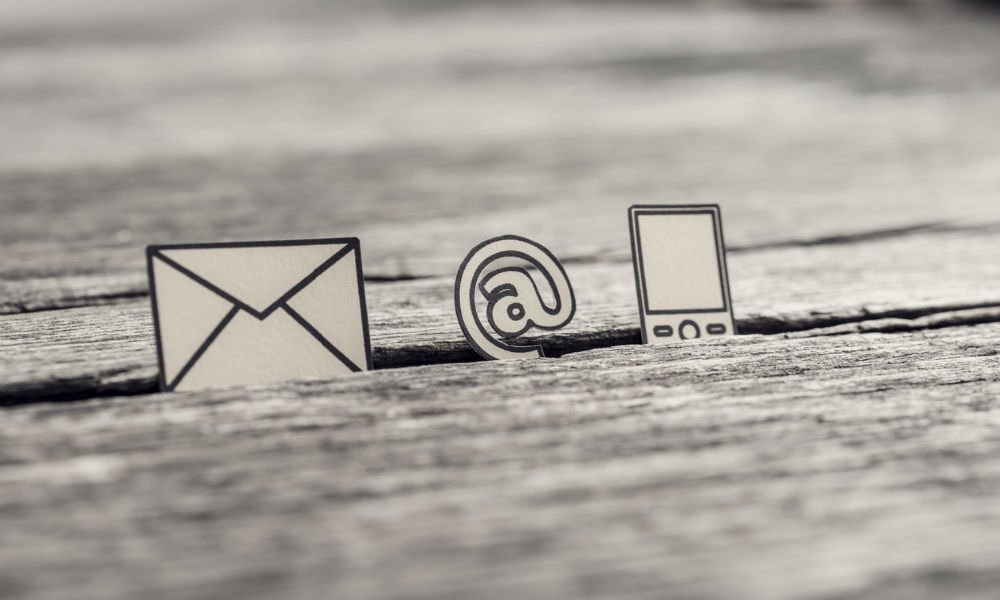Email marketing and SEO can work together to help you reach your marketing goals.
In fact, SEJ contributor Brad Smith recently shared five ways email marketing can help your SEO efforts.
Email can have a huge impact on your SEO efforts.
So how can you actually make them work together?
Here are several ways to combine email marketing and SEO for your digital marketing campaigns.
1. Repurpose Newsletter Content
To some marketers, a newsletter is typically an email promoting their latest blog post, or on occasion, their product or service.
Often, this is the promise:
Many newsletters promise exclusive content and notifications.
But the reality is generally different.
Regardless, you can’t apply this point if you only send emails when you publish a new post.
Make it a point to send your subscribers exclusive content to make them feel special.
After all, it’s the decent thing to do – especially if your sign-up copy made that guarantee.
It also gives you future content you can use as a blog post or any other content format (e.g., a research report, infographic, tool/software) you may choose.
That’s where the SEO benefit comes in.
Google loves great content.
When you repurpose your newsletter into a different format for people who aren’t on your email list yet, the content stands a chance of ranking on search engines – provided you also follow SEO best practices as well.
Be sure to indicate that the content was originally sent to subscribers of your newsletter.
Additionally, let people know that such repurposing isn’t a regular occurrence and there’s still subscriber-only content. This serves two purposes:
- It may encourage certain bystanders to sign up to your list.
- It will also show that you care about your subscribers.
Repurpose your newsletter content, but don’t overdo it or there will be little to no incentive(s) to sign up for your email list.
2. Create Epic Content
I know.
“Epic” and “content” are two overused words in the SEO world. So much so that many marketers just roll their eyes when they see those words together these days.
But you know the best part about it?
Many marketers now have an idea of what “epic content” is.
“Epic” applies whether you’re creating newsletter content from the scratch or you’re sending an email to promote your latest blog post.
I’ve defined high-quality content in the past as content that achieves its marketing objectives — whatever those are.
In an SEO context, quality content will keep visitors on your site longer, which will improve your on-site engagement metrics.
Google may not directly use bounce rate in Google Analytics in their ranking algorithm, but as Gillon Hunter wrote in Understanding Bounce Rate & How to Audit It:
“9 times out of 10, I would rather have a low bounce rate.”
How can you make your content more epic? By improving your:
- Headlines.
- Content quality (e.g., matching user intent, answering questions comprehensively, being useful).
- Images and visuals.
- Existing content.
Search engines want to reward better content. That doesn’t mean its word count or format.
Over time, a lower bounce rate and longer time spent on your site from your email subscribers will send good user signals to search engines.
3. Send Personalized Content to Your Email List
A recent study has shown that 77 percent of business professionals like receiving personalized content.
There are several ways to incorporate personalization into your content and even newsletters.
But we’re more interested in the latter and how it can benefit SEO.
Survey your audience and ask how often they want to receive your newsletter.
You can give users options when they’re signing up, like this:
Several studies have shown that readers who come to your site through emails are usually more engaged than other visitors.
Also, surveys can help you segment your subscribers according to the type(s) of content topics they want to receive in their newsletter.
For example, HubSpot has several blogs, including marketing and a sales blog. Subscribers to the marketing blog won’t receive updates about posts on the sales blog (and vice versa) unless they’re subscribed to both.
Such segmentation helps you send only the most relevant content to your subscribers.
Relevance is a key pillar of SEO.
When you send personalized, relevant content to your email list, they’re more likely to share and link to it.
This exposes your content to more people, which increases the likelihood of you getting even more shares and links.
All of this activity can both, directly and indirectly, help your content rank better in search engines.
4. Ask Subscribers for Reviews via Email
Depending on where they’re subscribed to, even marketers have occasionally received emails from brands asking for reviews.
Another Moz study reported that review signals account for 13 percent of local search ranking factors.
The truth is that for some businesses, ranking locally is more beneficial than their overall ranking.
They can use email to solicit reviews from their customers.
An added advantage of customer-written reviews is word usage — customers may end up writing these reviews using keywords or city names that are beneficial for your business.
According to the study by Local SEO Guide:
“At a high level, having a keyword you are trying to rank for, and a mention of a city you are working to rank in, in reviews has a high correlation with high ranking Google My Business results.”
Send links to third-party review sites to your subscribers with compelling CTAs to encourage them to click through and write their reviews for your product or service.
In the long run, such efforts, though seemingly insignificant, can enhance your SEO efforts.
Additionally, customer reviews also tell you what aspects of your business need improvement.
Conclusion
When it comes to SEO, you’ll need patience and perseverance to see results.
Use these tips to make sure your email strategy also helps you achieve your SEO goals.










